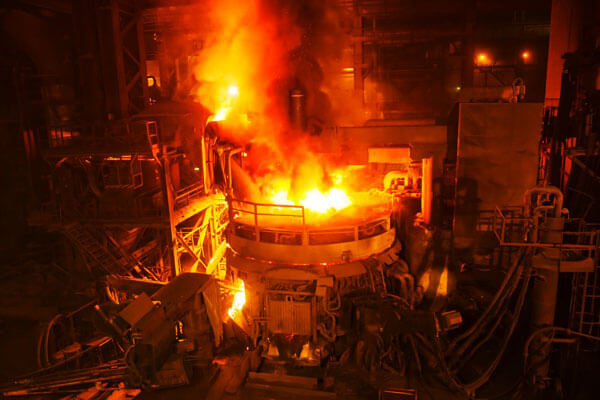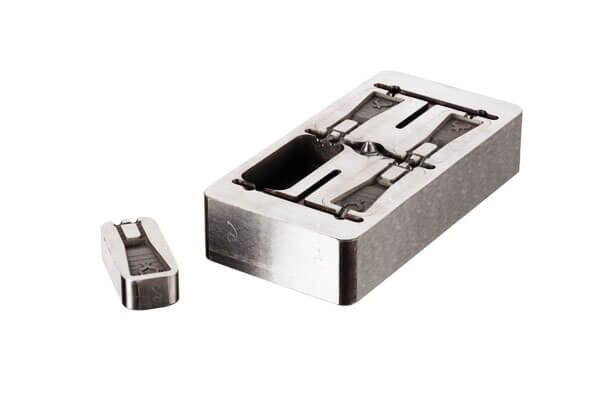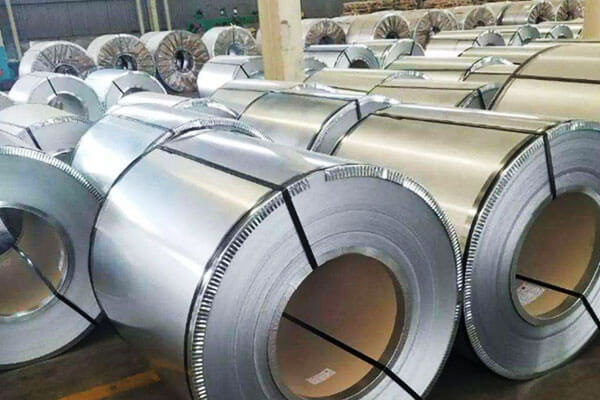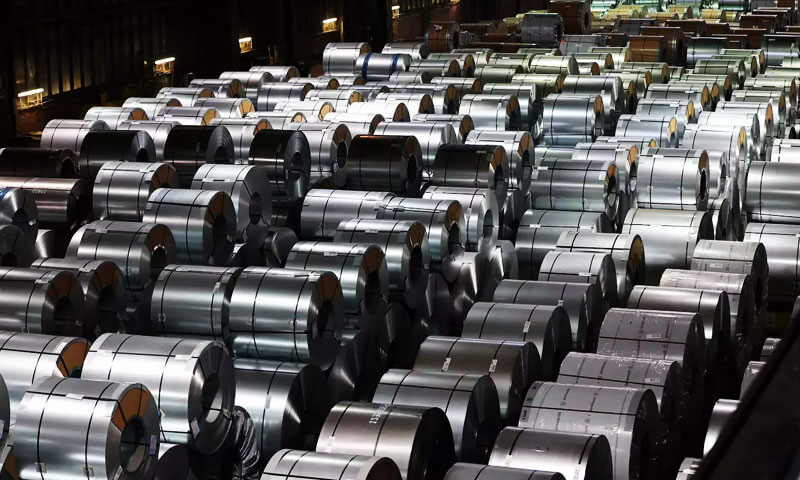Introdução
Em 1889, na Exposição Mundial de Paris, Uma estrutura de aço imponente surpreendeu o mundo - a Torre Eiffel.
Composto de 18,038 Componentes de ferro forjado, Essa maravilha da engenharia não apenas simbolizou o auge da inovação estrutural, mas também marcou a entrada oficial da humanidade na Era do Aço.
Da estrutura de arranha -céus aos complexos componentes de dispositivos médicos, O aço permeou todos os aspectos da civilização moderna com seu papel insubstituível.
Além de moldar o desenvolvimento industrial, Tem sido uma força motriz por trás da expansão global da infraestrutura e do progresso tecnológico.
Este artigo investiga a natureza científica do aço, suas técnicas de fabricação, Evolução industrial, e tendências futuras,
revelando como esse material essencial continua a definir os limites da civilização humana.
1. A Historical Review of Steel
A exploração humana de aço remonta a 1800 AC na Anatólia, Mas a verdadeira revolução industrial começou no século 19.
Em 1856, Henry Bessemer inventou o Bessemer Converter, que aumentaram a eficiência da produção de aço vinte vezes,
acelerando diretamente o rápido desenvolvimento de ferrovias, construção naval, e engenharia mecânica.
No século XX, A adoção generalizada de Tecnologia de fundição contínua melhorou ainda mais a eficiência da produção, resíduos de material reduzido, e qualidade aprimorada do produto.
No século 21, A indústria siderúrgica global passou por uma transformação significativa.
A China emergiu como a força dominante, Contabilidade para 53.9% de produção global de aço bruto em 2023.
Ao mesmo tempo, Apertando os regulamentos ambientais e as metas de neutralidade de carbono estão empurrando a indústria para a fabricação de baixo carbono e inteligência.
Uma revisão do histórico de desenvolvimento da Steel mostra que cada inovação tecnológica expandiu drasticamente suas aplicações,
permitindo que o aço penetre além da construção tradicional no aeroespacial, dispositivos médicos, and renewable energy sectors.
2. Steel Manufacturing Processes
Modern steel production is a highly sophisticated industrial system that integrates material science, engineering precision, e sustentabilidade ambiental.
Its core stages include raw material selection, fundição, refino, e moldar, as well as sustainable and circular economy practices.
Raw Materials & Extração
The quality of iron ore, coking coal, and alloying elements determines the final properties of steel.
Por exemplo, high-purity minério de ferro with a high Fe content significantly reduces impurities, enhancing mechanical strength and corrosion resistance.
AS 2024, global iron ore production has reached 2.2 billion tons, with resource distribution
and extraction costs playing a crucial role in shaping the competitive landscape of the steel industry.
Ironmaking & Steelmaking Processes
Modern steel production primarily relies on fornos de explosão (BF), direct reduced iron (Dri), e basic oxygen furnaces (BOF).
DRI technology has become an essential method for green steel production, as it reduces carbon emissions by 30% compared to traditional blast furnaces.
Adicionalmente, fornos de arco elétrico (Eaf), which utilize recycled scrap steel, ter increased their global production share to 28%,
significantly lowering energy consumption and contributing to a more sustainable production model.

Refino & Modelagem
Once molten steel undergoes secondary refining, it is processed through continuous casting and rolling to produce high-precision materials
como ultra-thin stainless steel sheets e aerospace-grade high-strength steel.
Advanced cooling control techniques improve grain structure and fatigue resistance, making steel products more suitable for extreme environments.
Sustentabilidade & Economia circular
Steel recycling is a cornerstone of modern industry sustainability.
Every ton of recycled steels prevents the emission of approximately 1.5 tons of CO₂, reduzindo significativamente a pegada de carbono da indústria.
Atualmente, o A taxa de reciclagem de aço global atingiu 85%, reforçando a transição para a produção de aço mais verde e mais eficiente.
3. Classifying Steel: Types and Their Unique Characteristics
O aço é um dos materiais mais versáteis da engenharia moderna, e sua adaptabilidade infinita decorre do controle preciso sobre sua composição química.
Variando o teor de carbono e adicionando diferentes elementos de liga, Os fabricantes criam aços com propriedades exclusivas adaptadas para aplicações específicas.
Aço carbono
Aço carbono Serve como base para inúmeras aplicações devido ao seu equilíbrio de força e ductilidade.
Suas propriedades dependem principalmente do teor de carbono, que normalmente varia de 0.05% para 2.0%.

Aço de baixo carbono (Aço suave):
- Características: Contém menos que 0.3% carbono, tornando -o altamente maleável, fácil de formar, e soldável.
- Aplicações: Usado extensivamente em corpos automotivos, vigas estruturais, and consumer goods where high strength is not the primary concern.
- Data Point: Low-carbon steel often exhibits a yield strength of around 250–350 MPa,
making it ideal for applications where moderate strength and excellent formability are required.
Aço médio carbono:
- Características: With carbon content between 0.3% e 0.6%, this steel offers an enhanced strength profile and improved wear resistance, although its ductility decreases.
- Aplicações: Often used for automotive components like gears and shafts, as well as in the manufacture of railway tracks.
- Data Point: Typical tensile strengths range from 400–600 MPa, providing a balance between strength and ductility.
Aço de alto carbono:
- Características: Contains between 0.6% e 2.0% carbono, resulting in increased hardness and wear resistance, though it sacrifices ductility.
- Aplicações: Ideal for cutting tools, molas, e fios de alta resistência, where durability under stress is critical.
- Data Point: High-carbon steels can achieve tensile strengths over 800 MPa after appropriate heat treatment, making them perfect for heavy-duty applications.
Liga de aço
Liga de aço enhances the basic properties of carbon steel by adding elements such as manganese, cromo, níquel, e molibdênio.
This customization allows for tailored performance attributes like improved toughness, Resistência ao calor, e resistência à corrosão.

Aço de baixa liga:
- Características: Typically includes small percentages (até 5%) of alloying elements that boost strength without a significant loss in ductility.
- Aplicações: Usado em aplicações estruturais, Pipelines, and automotive parts where high strength and moderate toughness are necessary.
Aço de alta liga:
- Características: Incorporates a higher proportion of alloying elements to deliver superior performance,
including enhanced wear resistance and the ability to withstand extreme temperatures. - Aplicações: Common in the aerospace and power generation sectors, where materials must endure harsh environments.
- Data Point: Certos aços de alta liga exibem forças de escoamento excedendo 600 MPA e são projetados para resistir à deformação, mesmo a temperaturas acima de 600 ° C.
Aço inoxidável
Aço inoxidável se distingue por sua excelente resistência à corrosão, alcançado incorporando pelo menos 10.5% cromo na liga.
O cromo forma uma camada passiva de óxido de cromo na superfície, protegendo o material da ferrugem e degradação ambiental.

Aço inoxidável austenítico:
- Características: Não magnético, altamente resistente à corrosão, e observado por sua excelente formabilidade e soldabilidade.
- Aplicações: Amplamente utilizado em eletrodomésticos, Equipamento de processamento químico, e dispositivos médicos.
- Data Point: Notas como 304 e 316 Aço inoxidável frequentemente demonstra uma resistência à tração na faixa de 500 a 750 MPa,
Combinado com excelente resistência à corrosão em diversos ambientes.
Aço inoxidável martensítico:
- Características: Oferece maior dureza e força em comparação com os tipos austeníticos, embora seja menos resistente à corrosão e mais difícil de soldar.
- Aplicações: Comumente encontrado em ferramentas de corte, instrumentos cirúrgicos, e ambientes de desgaste alto.
- Data Point: Os valores típicos de dureza podem alcançar 600 HRC após tratamento térmico, tornando-os adequados para aplicações de alto desempenho.
Aço inoxidável ferrítico:
- Características: Magnético e menos dúctil do que austenítico aço inoxidável, mas oferece boa resistência à rachadura de corrosão ao estresse.
- Aplicações: Utilizado em sistemas de escape automotivo e equipamentos industriais que requer força moderada com boa resistência à corrosão.
Aço inoxidável duplex:
- Características: Combina o melhor dos aços inoxidáveis austeníticos e ferríticos, Oferecendo alta resistência e melhor resistência à corrosão e à rachadura de corrosão ao estresse.
- Aplicações: Ideal para processamento químico, estruturas offshore, e aplicações marítimas.
- Data Point: Aços duplex geralmente possuem forças de escoamento entre 550 a 750 MPa, superando significativamente muitos aços austeníticos em termos de força.
Tool and High-Speed Steels
Aços da ferramenta e Aços de alta velocidade são ligas especializadas projetadas para a fabricação de ferramentas de corte, morre, e moldes.
They require exceptional hardness, resistência ao desgaste, and the ability to retain strength at high temperatures.

Aço da ferramenta:
- Características: Formulated with tungsten, molibdênio, vanádio, and cobalt, these steels excel in hardness and durability under extreme conditions.
- Aplicações: Employed in the production of hand tools, morre, and other precision tooling required for high-pressure applications.
- Data Point: Some tool steels achieve hardness levels exceeding 65 HRC, making them capable of enduring prolonged use without significant wear.
Aço de alta velocidade (HSS):
- Características: Known for its ability to maintain hardness even at high temperatures, HSS is critical for high-speed machining and cutting applications.
- Aplicações: Frequently used in drill bits, end mills, and other cutting tools in manufacturing processes.
- Data Point: High-speed steels typically sustain operating temperatures up to 600°C while retaining their cutting performance, thereby increasing production efficiency.
4. Unpacking Steel’s Physical and Mechanical Properties
Nesta seção, we break down the essential physical and mechanical properties of steel, highlighting how these characteristics drive its diverse applications.
Propriedades físicas
Density and Weight
- Steels boasts a density of approximately 7.85 g/cm³, which strikes an excellent balance between robustness and manageability.
This optimal density enables engineers to design structures that support heavy loads without incurring excessive weight. - Por exemplo, when constructing bridges or high-rise buildings, steel’s density allows for significant load-bearing capacity while maintaining structural efficiency.
Melting Point and Thermal Stability
- With a melting point that typically ranges between 1,370°C and 1,510°C, steel withstands extreme temperatures with ease.
This high melting point ensures that steels components remain stable even in high-heat environments such as turbine engines or industrial furnaces. - Além disso, the thermal stability of steel is critical in applications like automotive components and power plants, where consistent performance under heat is essential.
Condutividade térmica
- Steel generally exhibits a thermal conductivity around 50 W/m · k, which allows it to effectively transfer heat.
This property makes steel an ideal choice for applications that demand efficient heat dissipation, such as heat exchangers and engine parts. - Além disso, effective thermal conductivity helps minimize hotspots during high-speed machining and industrial processing.
Coeficiente de expansão térmica
- Steel’s coefficient of thermal expansion, aproximadamente 11-13 µm/m · ° C., ensures that it maintains dimensional stability under varying temperature conditions.
This stability is particularly important in precision engineering and construction, where even minor distortions can compromise structural integrity.
Propriedades magnéticas
- Steel’s inherent ferromagnetic properties allow it to be easily magnetized.
This attribute proves invaluable in the design of electric motors, transformadores, and various electronic components, where controlled magnetic behavior is essential.
Propriedades mecânicas
Resistência à tração e escoamento
- Steel stands out for its impressive tensile strength, which can range from 400 MPa to over 800 MPa after advanced heat treatments.
This strength enables steels to support massive loads, making it indispensable in large-scale construction and heavy machinery. - Além disso, the yield strength, normalmente entre 250 MPA e 350 MPa for common structural steels,
ensures that steel components resist permanent deformation under high stress.
High-strength alloys may even surpass 500 MPA, meeting the rigorous demands of aerospace and automotive applications.
Ductilidade e resistência
- Steel’s ability to deform under tensile stress without fracturing – known as ductility – proves vital in absorbing energy during impacts.
Por exemplo, advanced high-strength steels in automotive frames can absorb impact energies up to 120 kJ/cm³, thereby enhancing passenger safety. - Além disso, toughness—the capacity to withstand shock and vibration—ensures that steels can endure repetitive stress cycles,
which is critical for applications in bridges, ferrovias, e máquinas.
Resistência à fadiga
- The cyclic loading that many structures endure requires materials that can resist fatigue over time.
Steel’s excellent fatigue resistance guarantees that components such as beams and vehicle frames remain reliable even under constant load fluctuations,
thus extending the lifespan of critical infrastructure.
Dureza e resistência ao desgaste
- Steel’s hardness can be significantly enhanced through alloying and heat treatment processes, resulting in improved wear resistance.
This property is crucial for applications such as cutting tools, engrenagens, e rolamentos, where prolonged exposure to friction and stress demands a material that maintains its integrity over time. - Advanced heat treatments and alloying techniques enable certain steels to achieve hardness levels
that not only resist abrasion but also optimize performance in high-speed industrial processes.
Interplay of Properties and Their Impact
Synergistic Strength and Ductility
- The unique combination of high tensile strength and substantial ductility makes steels both robust and flexible.
This synergy allows it to support significant loads while absorbing shocks, which is critical in structures like skyscrapers and bridges.
Optimized Through Alloying and Heat Treatments
- Manufacturers continuously refine steel by adjusting carbon content and adding elements such as chromium, níquel, e manganês.
These enhancements lead to ultra-high-strength steels that can exceed 1 GPa in tensile strength while maintaining enough ductility to withstand dynamic stresses. - Além disso, ongoing advancements in heat treatment processes have improved fatigue resistance and overall performance,
ensuring that steels remains at the forefront of engineering materials.
Thermal and Mechanical Synergy
- Steel’s ability to efficiently transfer heat complements its mechanical robustness, enabling it to perform reliably under harsh conditions.
This thermal-mechanical interplay proves essential in applications where materials
must endure both high temperatures and significant mechanical stress, such as in aerospace engines and industrial boilers.
5. Processing and Manufacturing of Steel
The continuous advancement of steel processing technology has significantly enhanced the added value of steel products, enabling higher performance, durabilidade, e eficiência.
Tratamento térmico: Enhancing Strength and Durability
Heat treatment processes play a critical role in modifying the microstructure of steels to optimize their mechanical properties,
como dureza, resistência, e resistência ao desgaste. Common techniques include:
- Recozimento – Reduces internal stress, improves machinability, e aprimora a ductilidade.
- Normalização – Refines grain structure and improves mechanical strength.
- Tireização – Rapid cooling increases hardness and wear resistance.
- Temering – Adjusts toughness and reduces brittleness after quenching.
Por exemplo, laser quenching technology can increase the surface hardness of gears to HRC60, reducing the wear rate by 70%,
thereby extending service life in high-load applications such as automotive transmissions and industrial machinery.
Processamento a frio: Improving Precision and Surface Quality
Métodos de processamento a frio refinam as dimensões e o acabamento da superfície dos componentes de aço, oferecendo precisão superior e propriedades mecânicas aprimoradas. As principais técnicas incluem:
- Rolamento frio - Aumenta a força e o acabamento da superfície, comumente usado em painéis automotivos e componentes de precisão.
- Desenho frio - Melhora a precisão dimensional e a resistência à tração, essencial para produzir fios de aço fino e tubos.
- Extrusão fria - Aumenta as propriedades de uniformidade e mecânicas, Freqüentemente usado em fixadores de fabricação e peças estruturais.
Com 5-usinagem do eixo CNC, A precisão da fabricação de lâminas de turbina pode ser controlada dentro ± 0,005 mm,
Garantir a eficiência aerodinâmica ideal nas indústrias aeroespacial e de geração de energia.
Tratamento de superfície: Enhancing Corrosion Resistance and Aesthetic Appeal
Os tratamentos de superfície fornecem camadas de proteção que estendem a vida útil de produtos de aço, melhorar a resistência ao desgaste, e aprimorar o apelo visual. Advanced surface treatment methods include:

- Galvanizando – Zinc coating protects steel from rust and oxidation.
- Cromo – Increases hardness and provides a sleek, Acabamento resistente à corrosão.
- Fosfatando – Forms a protective layer that enhances paint adhesion and corrosion resistance.
Notavelmente, nano-galvanizing technology has revolutionized corrosion protection by extending the anti-corrosion cycle to 50 anos while simultaneously reducing zinc consumption by 60%,
making it an environmentally sustainable solution for infrastructure and marine applications.
Welding Technology: Achieving Strong and Reliable Joints
Steel structures often require advanced soldagem techniques to ensure durability and load-bearing capacity.
The choice of welding method depends on factors such as material composition, joint design, e requisitos de aplicação. Common welding techniques include:
- Soldagem de arco – Versatile and widely used in structural steel fabrication.
- Soldagem a laser – Provides high precision with minimal heat distortion, suitable for aerospace and medical components.
- Soldagem por feixe de elétrons – Ideal for high-strength joints in vacuum environments, commonly used in aerospace and nuclear industries.
Inovações em automated robotic welding e Soldagem por fricção (FSW) have further improved joint integrity and manufacturing efficiency,
making complex assemblies more reliable and cost-effective.
Fabricação de Precisão: Achieving Unprecedented Accuracy
Precision manufacturing is crucial in industries that require high-performance steel components with tight tolerances.
The development of advanced machining technologies has revolutionized the manufacturing of complex steel parts. As principais técnicas incluem:
- Usinagem CNC Centers – Enable high-speed, high-precision cutting and shaping.
- Fio EDM (Usinagem de Descarga Elétrica) – Allows for ultra-fine cutting of intricate steels components.
- Música eletrônica (Usinagem de Descarga Elétrica) – Enhances precision in hard-to-machine steel alloys.
These cutting-edge technologies have led to unprecedented improvements in the quality and performance of steels products,
enabling their widespread application in aerospace, implantes médicos, and high-performance engineering.
6. O impacto global e as aplicações do aço
Steel’s influence spans multiple industries, each benefiting from its unique properties:
- Construção e infraestrutura: Steel forms the backbone of modern urban landscapes.
Structural steel supports skyscrapers, pontes, and railways, while reinforcing bars (vergalhão) provide essential strength to concrete structures.
Por exemplo, the Hong Kong-Zhuhai-Macau Bridge utilized 2 million tons of steel, ensuring a lifespan exceeding 120 years under harsh marine conditions. - Automotive and Aerospace: High-strength steel alloys ensure vehicle safety and fuel efficiency.
Em aeroespacial, steel contributes to lightweight, durable airframes and engine components that withstand extreme temperatures and pressures. - Manufacturing and Industrial Equipment: From machine tools to heavy-duty industrial machinery, steel’s robustness and versatility make it indispensable.
Its use in precision equipment has transformed production efficiency across the globe. - Consumer and Medical Products: Stainless steel’s corrosion resistance and biocompatibility make it ideal for kitchen appliances, implantes médicos, e instrumentos cirúrgicos.
Advanced alloys such as 316LVM provide superior performance in demanding healthcare applications.
7. Estado atual da indústria siderúrgica: Uma análise abrangente
The steel industry is at a turning point, balancing technological progress with sustainability goals while adapting to shifting economic and geopolitical landscapes.
Visão geral do mercado global: O empurrão para o aço neutro de carbono
Countries worldwide are investing in environmentally friendly steelmaking processes.
Sweden’s hydrogen metallurgical test furnace is now operational, targeting zero carbon emissions by 2030.
Enquanto isso, leading producers are implementing low-emission production techniques to meet stringent global regulations.
Gestão da cadeia de abastecimento: Garantindo estabilidade e eficiência
Disponibilidade de matéria-prima, logistics, and international trade policies remain critical factors affecting steel production.
Companies are adopting smart supply chain solutions to enhance stability and efficiency.
Por exemplo, Anshan Iron and Steel’s smart factory, utilizing full-process AI, has achieved a 99.7% defect detection rate, significantly improving production accuracy and reducing waste.
Inovação tecnológica: A evolução do aço de alto desempenho
Cutting-edge developments are redefining the steel industry:
- Smart factories – AI-driven systems enable real-time monitoring and optimization of production.
- Leve, Aços de alta resistência – Essential for the automotive and aerospace setores, reducing fuel consumption and improving safety.
- Nanocrystalline steel – While offering strengths above 2 GPA, it is still in early-stage development,
with production costs 40% lower than titanium alloys but facing challenges in large-scale industrial applications.
Estratégias de mudança climática: Esforços de descarbonização em todo o setor
The steel industry is taking proactive measures to reduce emissions:
- China’s commitment – Plans to lower carbon emission intensity by 18% por 2030 through advanced CCUS and energy-efficient processes.
- Electrification and alternative fuels – The adoption of hydrogen-based steelmaking and expansion of forno de arco elétrico (Eaf) produção are key to achieving net-zero emissions.
8. Tendências e desafios futuros na indústria siderúrgica
As the steel industry evolves to meet global demand, sustainability goals, and technological advancements, it faces both transformative opportunities and significant challenges.
The sector navigates a landscape shaped by innovation, environmental policies, and shifting economic conditions.
Inovação tecnológica: Manufatura inteligente e materiais de alto desempenho
A integração de automação, inteligência artificial (Ai), and smart factories is reshaping steel production.
AI-driven systems optimize production efficiency, reduzir o desperdício, and enhance quality control.
A ascensão de nanocrystalline steel, boasting strengths exceeding 2 GPA, is revolutionizing high-performance applications,
potentially rivaling titanium alloys in aerospace and advanced engineering.
Enquanto isso, breakthroughs in 3D printing of steel allow for complex, lightweight designs with superior mechanical properties.
Iniciativas de sustentabilidade: Descarbonização e produção verde
In response to climate change and carbon reduction targets, the steel industry is actively adopting cleaner production technologies. Key sustainability trends include:
- Hydrogen-based steelmaking – Countries like Sweden are pioneering hydrogen metallurgy, aiming for carbon-neutral steel by 2030.
- Carbon capture, utilization, and storage (CCUS) – China’s steels sector aims to cut carbon intensity by 18% por 2030, leveraging carbon capture and recycling technologies.
- Electric arc furnaces (EAFs) – Growing reliance on EAFs, which recycle scrap steel, reduces energy consumption and emissions compared to traditional blast furnaces.
Cenário material competitivo: O desafio das alternativas
Steel faces competition from emerging materials such as compósitos, ligas de alumínio, and nanomaterials, particularmente em indústrias automotivas e aeroespaciais.
No entanto, steel’s cost-effectiveness, durabilidade, e reciclabilidade continue to make it the backbone of industrial manufacturing.
Inovações em alta resistência, lightweight steels are further enhancing its adaptability in structural applications.
Dinâmica do mercado global: Políticas comerciais e mudanças econômicas
The steel industry is deeply influenced by geopolitical factors, trade regulations, and economic trends:
- Supply chain disruptions – Fluctuating raw material prices and political trade barriers impact global steels production.
- Regional growth – Rapid industrialization in Southeast Asia and Africa is driving increased steel consumption.
- Strategic alliances – Steels producers are forming global partnerships to enhance resource efficiency and market expansion.
9. Conclusão
Steel not only transformed the physical landscape—from the Eiffel Tower to modern urban skylines—but also reshaped human progress itself.
As the world transitions toward more sustainable and innovative manufacturing processes,
steel continues to evolve, driven by advancements in technology and a relentless commitment to excellence.
Its journey from ancient iron production to modern smart factories encapsulates the spirit of industrial innovation and human ingenuity.
Se você está procurando produtos de aço ou aço de alta qualidade, Escolhendo LangHe é a decisão perfeita para suas necessidades de fabricação.


